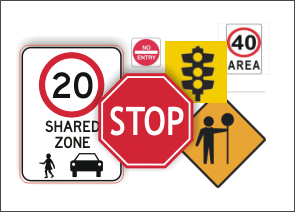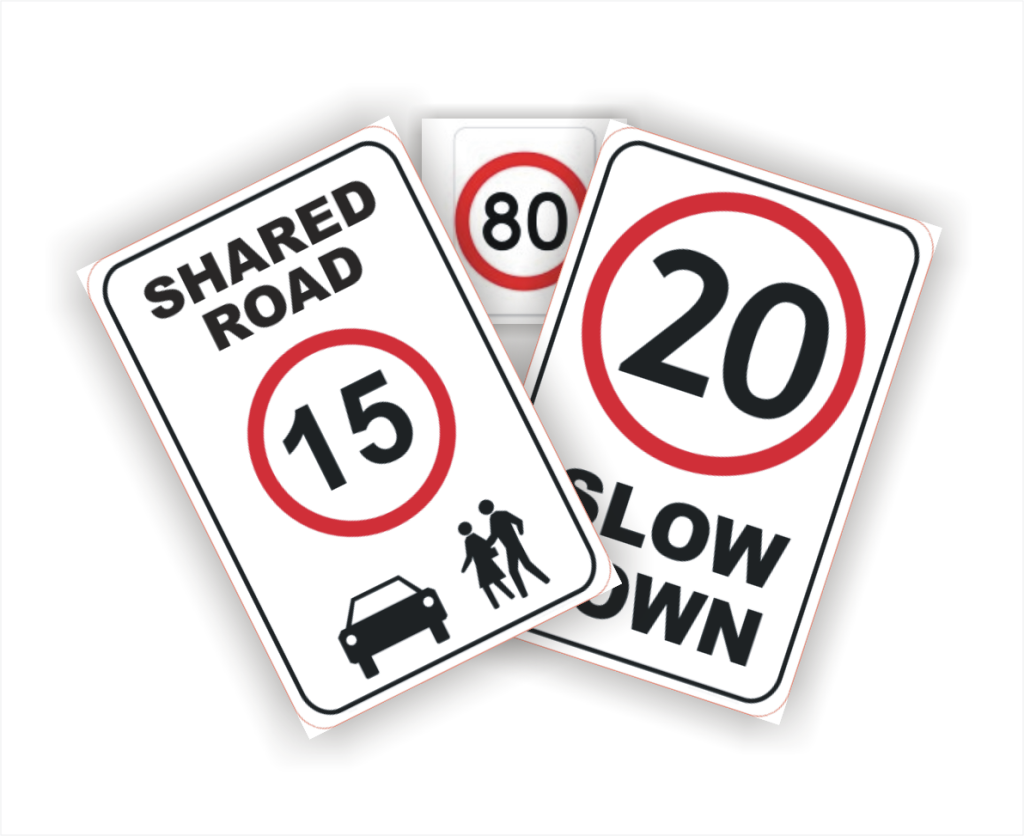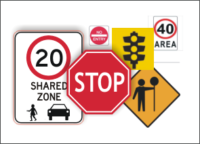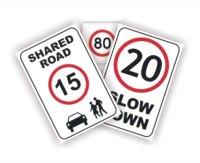National Safety Signs supplies a comprehensive range of traffic and road signs across Australia. Whether you need regulatory, warning or information signs—made to AS/ NZS compliance. Reflective materials or custom designs—we have your signage needs covered.
Traffic and road signs are essential elements to our transportation system in Australia, designed to promote safety, efficiency, and order on the roads. These signs serve as visual cues for drivers, pedestrians, and cyclists. Conveying important information about traffic regulations, hazards, and directions.
They encompass a variety of categories, including regulatory signs that enforce laws (like stop and give way signs, regulatory, warning signs), Traffic Control signs that alert users to potential dangers (Construction Sites and Civil works etc)
The use of standardised colours and shapes enhances recognition and comprehension, ensuring that road users can quickly respond to the signals.
With advances in technology, digital traffic signs are becoming increasingly common. This offers real-time updates on traffic conditions and emergencies.
Overall, traffic and road signs play a crucial role in maintaining order on our roadways and enhancing the overall safety of all who travel.

Road and Traffic Signs and Road Work Signs

Speed Restriction Signs

Barriers, Cones and Barricade Tape
What are the different types of regulatory traffic signs?
Traffic signs can be categorised into three main types: regulatory signs, warning signs, and guide signs. Regulatory signs provide instructions that must be followed, such as speed limit signs and stop signs. Warning signs alert drivers to potential hazards, like pedestrian crossings or road works. Guide signs assists drivers with helpful information, such as directions or points of interest.
How do road signs affect road safety?
These signs communicate important information to all road users, helping to prevent accidents. For instance, a speed limit sign informs drivers of the maximum safe speed. While warning signs indicate potential dangers ahead. Adhering to these signs is essential for the safety of both drivers and pedestrians. Compliant Signage contribute to the overall organisation of traffic flow. Regulatory signs, such as stop and give way signs, establish rules that govern interactions between vehicles and pedestrians. This ensures a smoother and more predictable travel experience. Directional signs assist drivers in navigating unfamiliar areas, reducing confusion and the likelihood of sudden stops or erratic maneuver’s that could lead to accidents.
In addition to their practical functions, road signs also serve as a means of enhancing public awareness about safe driving practices. Educational signs, such as those that promote seat belt use or warn against distracted driving, play a vital role in shaping driver behaviour and fostering a culture of safety on the roads.
It is also important to recognise the role of local governments and transportation agencies in maintaining and updating road signs. Regular inspections and timely replacements of damaged or faded signs are crucial for ensuring that all messages remain clear and visible. Community awareness campaigns can further emphasise the importance of road signs. In can encouraging citizens to report any issues they encounter.
Road signs are not merely passive markers; they are active participants in the intricate system of road safety and traffic management. By understanding and respecting these signs, all road users can contribute to safer roads and a reduction in accidents. Fostering an environment where everyone -drivers, cyclists, and pedestrians – can navigate with confidence.
Who has the right of way at a give way sign?
In Australia, the road rules dictate that at a give way sign, drivers on the side road must give way to oncoming traffic from the main road ahead. This rule is crucial for maintaining safety at side road intersections. Especially in built up areas where traffic control can be affected by roadwork signs or temporary traffic measures. When approaching a give way sign, it is essential to observe road markings and any temporary signs that may indicate changes in the usual traffic flow. Additionally, when making a left turn, drivers must still adhere to these rules of the road to prevent accidents.
Road signage in Australia, including directional, guide and information signs, help inform drivers about the right of way and other important traffic laws. In Queensland, for instance, the Queensland government emphasises the need for motorists to share the road responsibly. Especially in school zones where pedestrian traffic is high. Understanding these rules and signage is vital for ensuring safe travel on Australian roads, navigating freeways or city streets.





